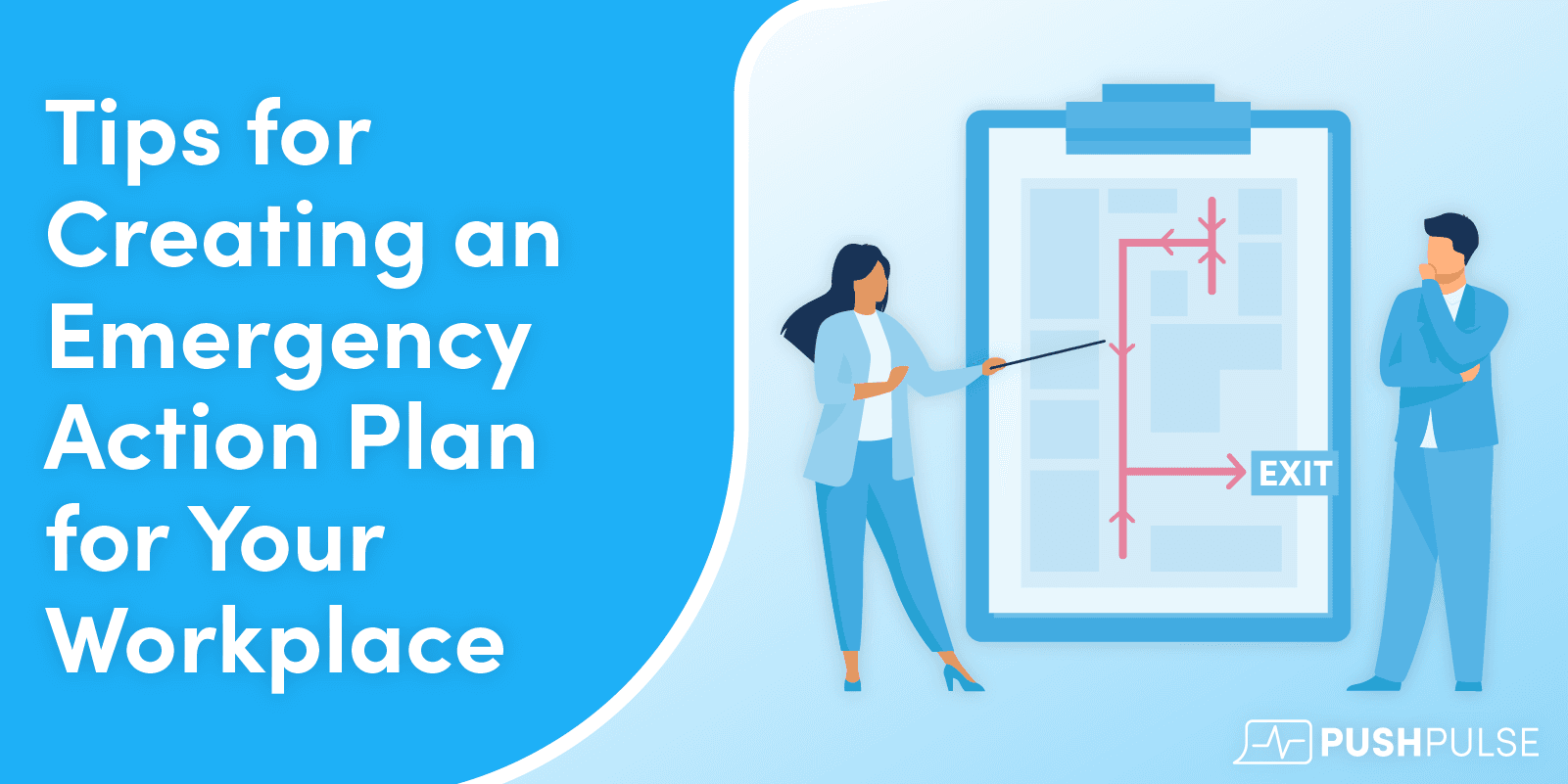Tips for Creating an Emergency Action Plan for Your Workplace
Tips for Creating an Emergency Action Plan for Your Workplace
A well-prepared workplace emergency action plan (EAP) can be the difference between chaos and a controlled response during an incident. Whether dealing with a fire, natural disaster, medical emergency, or security threat, having a structured plan ensures employee safety and minimizes operational disruptions. Here are key steps to creating an effective EAP, along with insights on how PushPulse can enhance your emergency response.
1. Identify Potential Workplace Emergencies
Start by assessing risks specific to your workplace. Common emergencies include:
Fires
Medical incidents
Severe weather events (tornadoes, earthquakes, floods)
Active threats (intruders, workplace violence)
Hazardous material spills
Conduct a risk assessment by evaluating past incidents, industry-specific hazards, and environmental threats.
2. Develop Clear Emergency Procedures
For each identified emergency, outline step-by-step procedures that employees should follow. This should include:
Evacuation routes and exits
Shelter-in-place guidelines
Fire suppression measures
First-aid response protocols
Incident reporting processes
Using PushPulse, organizations can distribute digital emergency procedures, ensuring employees have quick access to action plans on their mobile devices or workplace kiosks.
3. Assign Roles and Responsibilities
An effective EAP designates individuals to key roles, such as:
Emergency Coordinators – Oversee response efforts and ensure procedures are followed.
Evacuation Leaders – Guide employees to safety.
First Aid Responders – Provide medical assistance.
Communication Officers – Relay updates to employees and emergency services.
PushPulse’s mass notification system enables role-based messaging, allowing leaders to communicate directly with teams responsible for specific tasks.
4. Establish Emergency Communication Protocols
Effective communication is crucial during an emergency. Your plan should include:
Primary and secondary communication channels (emails, text alerts, PA systems, radios, etc.)
Emergency contact lists
A designated point of contact for external agencies (fire department, law enforcement, medical responders)
With PushPulse, organizations can instantly send multi-channel alerts to employees, ensuring real-time updates are delivered via SMS, email, app notifications, and even digital signage.
5. Conduct Regular Training and Drills
An emergency action plan is only effective if employees are trained to execute it. Conduct:
Fire and evacuation drills
Medical response training (CPR, AED usage)
Active shooter preparedness exercises
PushPulse can be used to schedule and document training sessions, ensuring compliance and tracking participation.
6. Keep Emergency Supplies Stocked
Ensure your workplace is equipped with essential emergency supplies, including:
First-aid kits
Fire extinguishers
Flashlights and batteries
Emergency food and water
Protective gear (masks, gloves, safety goggles)
PushPulse’s document library feature allows organizations to maintain digital checklists for emergency supply inventory management.
7. Review and Update Your Plan Regularly
Emergencies evolve, and so should your EAP. Review your plan annually and after any incident to identify areas for improvement. Key considerations include:
Changes in workplace layout
New employees or role assignments
Lessons learned from drills or real incidents
PushPulse’s centralized document storage ensures that employees always have access to the latest version of the EAP, eliminating confusion over outdated procedures.
Conclusion
Creating an effective emergency action plan requires careful planning, clear communication, and regular training. By leveraging PushPulse, workplaces can enhance their preparedness through real-time alerts, role-based communication, and streamlined emergency procedures. A well-executed EAP not only protects employees but also ensures business continuity in the face of unexpected crises.
Start building your emergency action plan today and integrate technology like PushPulse to keep your workforce informed and ready for any situation.
Try PushPulse for free
Upgrading your emergency response strategy is easier than you think. Start sending alerts in minutes.
